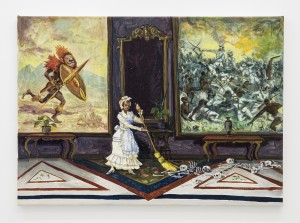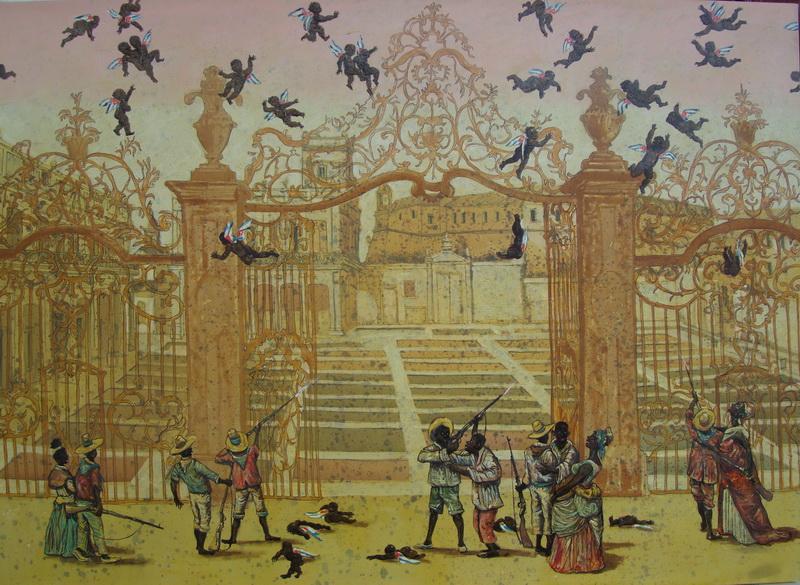
Douglas Perez Castro
Bocabajo, 2015.
About:
Reseca, 2015.
Douglas Perez Castro (born 1972 in Cienfuegos, Cuba) is an artist of great versatility and impredictability. His many and varied interests — history, literature, film, caricature, postage stamp collections, zoology, to name but a few — crop up in his work, literally and figuratively. Perez Castro’s intellectual and creative restlessness expresses itself in works of art that leap between historical periods, styles or scenes: points of reference are chopped and changed, in the seeming absence of a clear connection. Perez Castro builds up these alternative worlds of his in layer upon layer of oil paint. With care, irony and humour, he adapts real-life picture of economic, social and cultural life on the island of his birth. In doing so, he appropriates the iconography and techniques of the Cuban avant-garde of the mid-19th century but also of the 17th-century Dutch masters. As he himself as expressed it, this means that he transports and establishes himself between his own Cuban history and the history of art.
Mr.Mix, 2015.
Maquila, 2014.
Killing Time.
Douglas Pérez Castro (1972 in Cienfuegos, Cuba), die docent schilderen is aan het Instituto Superior de Arte in Havana, Cuba, is een van die eigentijdse Cubaanse kunstenaars die in een traditionele, figuratieve stijl werkt. In zijn schilderijen verwerkt hij op vaak ironische en humoristische wijze actuele beelden van het economische, maatschappelijke en culturele leven op Cuba. Doordat hij zich daarbij op een postmoderne wijze de iconografie en techniek toeeigent van zowel de Cubaanse avant-garde uit het midden van de 19e als van Hollandse fijnschilders uit de 17de eeuw, beweegt zijn werk zich tussen zijn eigen ‘geografische geschiedenis (Cuba’s economische en sociale ontwikkeling) en de geschiedenis van de kunst’, zoals hij het onlangs zelf treffend verwoordde (tekst Ron Lang Art Amsterdam)




